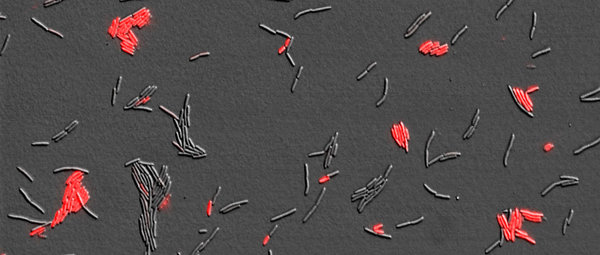
Publications of Gundula Eller
All genres
Journal Article (10)
1.
Journal Article
Could bacterivorous zooplankton affect lake pelagic methanotrophic activity? Fundamental and Applied Limnology Archiv für Hydrobiologie 169 (3), pp. 203 - 209 (2007)
2.
Journal Article
Methane-derived carbon flows through methane-oxidizing bacteria to higher trophic levels in aquatic systems. Environmental Microbiology 9 (5), pp. 1126 - 1134 (2007)
3.
Journal Article
Linking larval chironomids to methane: seasonal variation of the microbial methane cycle and chironomid δ¹³C. Aquatic Microbial Ecology 46 (3), pp. 273 - 282 (2007)
4.
Journal Article
Possible sources of methane-derived carbon for chironomid larvae. Aquatic Microbial Ecology 46 (3), pp. 283 - 293 (2007)
5.
Journal Article
The gut microenvironment of sediment-dwelling Chironomus plumosus larvae as characterised with O₂, pH, and redox microsensors. Journal of Comparative Physiology B - Biochemical Systemic and Environmental Physiology 176 (7), pp. 673 - 683 (2006)
6.
Journal Article
Automated detection and enumeration for toxic algae by solid-phase cytometry and the introduction of a new probe for Prymnesium parvum (Haptophyta: Prymnesiophyceae). Journal of Plankton Research 28 (7), pp. 643 - 657 (2006)
7.
Journal Article
Cooccurrence of aerobic and anaerobic methane oxidation in the water column of Lake Plußsee. Applied and Environmental Microbiology 71 (12), pp. 8925 - 8928 (2005)
8.
Journal Article
Methane cycling in lake sediments and its influence on chironomid larval δ13C. FEMS Microbiology Ecology 54 (3), pp. 339 - 350 (2005)
9.
Journal Article
Comparing field and microcosm experiments: a case study on methano- and methylo-trophic bacteria in paddy soil. FEMS Microbiology Ecology 51 (2), pp. 279 - 291 (2005)
10.
Journal Article
Phylogenetic position of the parasitoid nanoflagellate pirsonia inferred from nuclear-encoded small subunit ribosomal DNA and a description of Pseudopirsonia n. gen. and Pseudopirsonia mucosa (Drebes) comb. nov. Protist 155 (2), pp. 143 - 156 (2004)